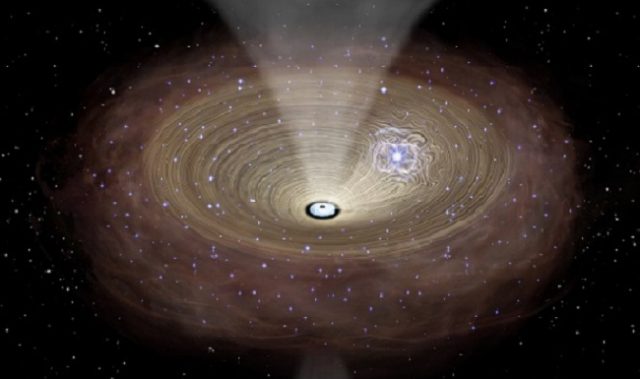
AsianScientist (Nov. 17, 2016) – Deep in an underground mine in Japan, a tank of ultra-pure water in a gigantic cylinder full of photomultiplier tubes awaits a rare event. Scientists involved in the Super-Kamiokande experiment, which seeks to detect neutrinos from nearby supernovas, have described the details of their new real-time computer monitoring system in an article published in Astroparticle Physics.
Neutrinos are enigmatic particles that are released at the speed of light when a supernova explodes. Detecting neutrinos from these super-energetic events could tell us crucial information about the collapse of stars and the formation of black holes. The problem is that these stellar explosions occur very infrequently: only three or four each century in our galaxy.
To be prepared to capture this rare event, members of the international Super-Kamiokande scientific collaboration have built a ‘monitor’ that is constantly on the lookout for a nearby supernova.
“It is a computer system that analyzes the events recorded in the depths of the observatory in real time and, if it detects abnormally large flows of neutrinos, it quickly alerts the physicists watching from the control room,” explained Dr. Luis Labarga, a physicist at the Autonomous University of Madrid and a member of the collaboration.
Thanks to this neutrino monitor, experts can assess the significance of the signal within minutes and see whether it is actually from a nearby supernova inside the Milky Way. If it is, they can issue an early warning to all the interested research centers around the world, which they provide with information and the celestial coordinates of the source of neutrinos. They can then point all of their optical observation instruments towards it, since the electromagnetic signal arrives with a delay.
“During supernova explosions an enormous number of neutrinos is generated in an extremely small space of time—a few seconds—and this why we need to be ready,” Labarga added. “This allows us to research the fundamental properties of these fascinating particles, such as their interactions, their hierarchy and the absolute value of their mass, their half-life, and surely other properties that we still cannot even imagine.”
Labarga said that the Super-Kamiokande is permanently ready to detect neutrinos, except for essential calibration or repair intervals. Any day could take us by surprise.
The article can be found at: Abe et al. (2016) The Super-Kamiokande Collaboration: Real-time Supernova Neutrino Burst Monitor at Super-Kamiokande.
———
Source: Plataforma SINC; Photo: Kamioka Observatory.
Disclaimer: This article does not necessarily reflect the views of AsianScientist or its staff.












